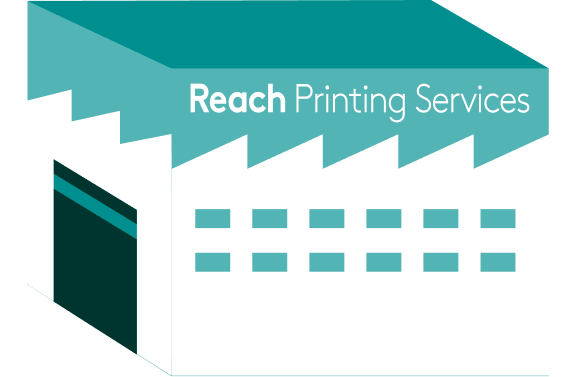Sustainable Future
There are many ways to communicate, now more than ever before, but perception of the environmental impact of marketing channels can be very misleading. Perhaps you’ve read statements such as: ‘By keeping it digital, you’re doing your bit to help the planet, too’, ‘Go green, go paperless’, ‘Choose e-billing – save a tree’, ‘Help the environment, don’t print this email’, and even statements like ‘…our commitment to reducing our impact on the environment will see us reduce the volume of print we produce over the next few years’… but there is no substantial evidence to back up such statements.
We are often asked about the environmental impact of print and paper and how we as a company manage this. Yes, what we do has an impact on the environment, but we have robust policies and procedures in place to reduce this impact. We still find, however, that misconceptions – even from within the industry itself – are also being passed onto the consumer.
We are members of Two Sides, an independent not-for-profit organisation. Two Sides has many members from the graphic communications industries, who support its aims to inform, educate and eradicate incorrect and damaging impressions left on the consumer by inaccurate information.
Two Sides runs initiatives such as The Greenwashing Campaign, which has seen 441 companies from across the world remove misleading anti-paper messaging, including Next, HSBC, RBS, Ryanair, Barclaycard, Whitbread and Thames Water. However, they continually need to challenge organisations so, if you come across examples of Greenwash, you can report them to [email protected].
Every channel has an impact on the environment. The UK Committee of Advertising Practice1 states in Rule 11.4: ‘Marketers must base environmental claims on the full life cycle of the advertised product, unless the marketing communication states otherwise, and must make clear the limits of the life cycle. If a general claim cannot be justified, a more limited claim about specific aspects of a product might be justifiable. Marketers must ensure claims that are based on only part of the advertised product’s life cycle do not mislead consumers about the product’s total environmental impact.’1 Unfortunately, it is apparent that misleading statements are still being made. In fact, a study by Two Sides found that half the leading Fortune 500 telecommunications companies, banks and utilities were making unsubstantiated claims about the environmental benefits of electronic billing.
A European survey of 6,000 consumers, commissioned by Two Sides and carried out by independent research company Toluna, in February 20192 revealed 53% of those surveyed believed that electronic communication is better for the environment. In fact, the ICT industry accounts for around 2.5-3% of global GHG emissions, and this is predicted to rise to 14% by 2040 – phones alone accounted for 435,000 tonnes of e-waste in 20163.
The European paper industry is a world leader when it comes to sustainably sourced raw materials, renewable energy and recycling rates. Yet the myths around paper are still prevalent amongst consumers, and often the source of these misconceptions is the abundance of misleading information about paper and its impact on the environment.
A whopping 63%2 of those surveyed believed only recycled paper should be used. Many marketers, print buyers and consumers are unaware that fibre degrades after several uses. Virgin fibre is essential to European paper production, and when paper, made of virgin fibre, is sourced sustainably through schemes such as FSC or PEFC, it enables the life cycle to continue and promotes responsible management of the world’s forests.
It is increasingly clear that electronic communication and, in particular, the energy requirements of the increasing worldwide network of servers have a significant and growing carbon footprint. By 2040, the ICT carbon footprint could account for as much as 14% of the total worldwide footprint at the 2016 level.4
Businesses and individuals are increasingly using ‘cloud’ services. These data centres store almost everything we do online, including our web searches, social media posts, online statements, policy documents and bills, to name but a few. Based on the estimates contained in the SMARTer 2020 analysis, the aggregate electricity demand of the cloud (including data centres and networks, but not devices) in 2011 was 684 billion kWh. If compared with the electricity demand of countries in the same year, the cloud would rank 6th in the world, with demand expected to increase to 63% by 2020.5
Far from causing deforestation, the demand for sustainably sourced paper in Europe promotes responsibly managed forests that provide many environmental and social benefits. The income, which landowners receive for trees grown on their land, is an important incentive to maintain, sustainably manage and renew this valuable resource. The fact is, our working forests are an essential part of the European environment and the economy.
Paper is a renewable and recyclable product that, if responsibly produced and consumed, is an environmentally sustainable media. It is often surprising to learn that in Europe, where 93% of our paper comes from, the area of forest grew by 44,000 square kilometres – an area the size of Switzerland – between 2005 and 2015.6
The paper, pulp and print sector is one of the lowest industrial emitters of greenhouse gasses, accounting for just 1% of global greenhouse gas (GHG) emissions.7 In addition, the CO2 emissions of the European pulp and paper industry was reduced by 22% between 2005 and 2013.8
The European pulp and paper industry produces original bio-based products using wood, a renewable material. It is also the biggest single industrial user and producer of renewable energy in the EU; 56% of the industry’s total primary annual energy consumption is biomass-based. And the industry has the potential to do even more in the future. It has the experience, technology and supply chain to play a big part in the bio economy, and to do so in a resource efficient manner.8
To find out more, visit Two Sides’ website www.twosides.info and, if you are a print buyer and would like to know more about Reach Printing Services’ policies and procedures, there is no better way to do so than by visiting one of our sites and seeing us in action.
Sources:
1. Advertising Standards Authority, 2014. The CAP Code – The UK Code of Non-Broadcast Advertising, Sales Promotion and Direct Marketing, Edition 12.
2. Two Sides,2019, Companies across the world remove misleading go green messaging.
3. Belkhir L & Elmeligi A, Journal of Cleaner Production: Assessing ICT global emissions footprint: Trends to 2040 & recommendations, 2018
4. Journal of Cleaner Production, 2018.
5. GeSI SMARTer2020: The Role of ICT in Driving a Sustainable Future (2015 report)
6. FAO data, 2005–2015
7. Ecofys, 2013
8. CEPI Key Statistics, 2014

